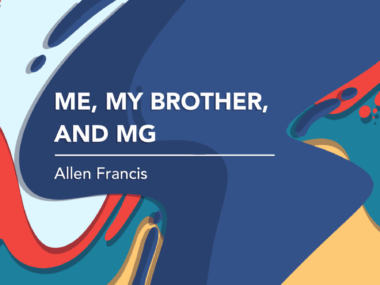Daily declarations of perseverance against the unpredictability of MG
I lean into routines to help me manage my disease
Written by |

Life with myasthenia gravis (MG) often feels unpredictable. One day, my legs are steady enough to walk Pablo, my French bulldog, around the block. The next day, weakness makes standing at the kitchen counter a challenge. Some of the muscles MG attacks control breathing, swallowing, lifting, and keeping one’s head erect. MG also affects the ability to communicate.
Legendary Massachusetts politician Martin Lomasney once said, “Never write if you can speak; never speak if you can nod; never nod if you can wink.” Wise advice for success in most endeavors, but it can be impossible for those of us with MG who may have trouble raising our eyebrows or holding a smile because our muscles tire quickly. Facial expressions may not fully reflect one’s feelings.
I’ve experienced the frustration of not being able to communicate. Even whistling, one of my favorite activities, can be impossible. Though I’ve joked with emergency room staff that my family may prefer me when I’m unable to communicate or entertain them with my whistling.
The poet Alexander Pope wrote, “Order is heaven’s first law.” When chronic illness rearranges your days without asking permission, order can become a lifeline. Routines are not about perfection or rigidity. They are about creating small, repeatable acts that give structure when the disease tries to unravel it.
Greeting unpredictable MG
From a medical perspective, MG symptoms worsen with use. This is why pacing yourself matters. Routines allow me to balance activity with rest, schedule medications at the right times, plan meals when it feels safe to swallow, and nap when necessary.
Even something as ordinary as eating dinner at 6 p.m. can be a health strategy. By keeping mealtimes consistent, I can avoid eating when fatigue makes chewing and swallowing dangerous. Over time, routines turn survival into habit and habits into safety.
Living with MG means waking each day unsure of what your body will allow. That uncertainty can gnaw at your mental health. Routines help push back the anxiety by providing anchors.
Making the bed each morning, even if it takes me longer than it used to, signals to my mind that the day has begun. Sitting with tea while I take my first medications grounds me in gratitude for another sunrise. Small actions become quiet victories. As Scripture reminds us: “Let all things be done decently and in order.” These small orders build resilience and help me greet the unpredictable with steadiness, rather than despair.
Routines have carried people through crises far larger than mine. Soldiers in wartime, for instance, often clung to small rituals. Repeated actions such as writing letters, cleaning boots, saying prayers, and taking turns at kitchen patrol duty gave meaning amid chaos. By shaping our daily thoughts and acts, routines help create the resilience we need to endure.
In my years in the classroom, I saw the same truth in students. Those who built simple study habits often thrived, even in tough circumstances. Illness has taught me that the same principle applies to the body as much as to the mind.
For me, routines are simple, but sacred. My Apple Watch buzzes with medication alarms. I no longer try to “remember” on my own. I write these weekly columns in the same chair, at roughly the same time, so that the act becomes less about willpower and more about rhythm. Afternoon rest is no longer an indulgence, but a discipline, as important as any prescription. I end each day with a journal entry. I include details about when I got up, my weight at that time, my meals, and my energy level. Did I nap? I also record personal interactions, feelings, emotions, and overall well-being.
The author Anne Lamott wrote, “Hope begins in the dark, the stubborn hope that if you just show up and try to do the right thing, the dawn will come. You wait, watch and work: you don’t give up.” Showing up for routines, however small, is my way of keeping hope alive.
Routines may appear minor, but for those of us living with MG, they are daily declarations of perseverance. They transform the fragile into the steady, and the overwhelming into the manageable. They whisper that life, though altered, can still be ordered and meaningful.
As Scarlett O’Hara famously declared in “Gone With the Wind,” “After all, tomorrow is another day!” Each tomorrow, with its medications, meals, prayers, naps, pauses, and occasional falls or spills, can be met with the strength of small routines. They are my way of saying, through all the uncertainty, I’m still here.
And I’m ready for my closeup, Mr. DeMille.
Note: Myasthenia Gravis News is strictly a news and information website about the disease. It does not provide medical advice, diagnosis, or treatment. This content is not intended to be a substitute for professional medical advice, diagnosis, or treatment. Always seek the advice of your physician or other qualified health provider with any questions you may have regarding a medical condition. Never disregard professional medical advice or delay in seeking it because of something you have read on this website. The opinions expressed in this column are not those of Myasthenia Gravis News or its parent company, Bionews, and are intended to spark discussion about issues pertaining to myasthenia gravis.






Leave a comment
Fill in the required fields to post. Your email address will not be published.